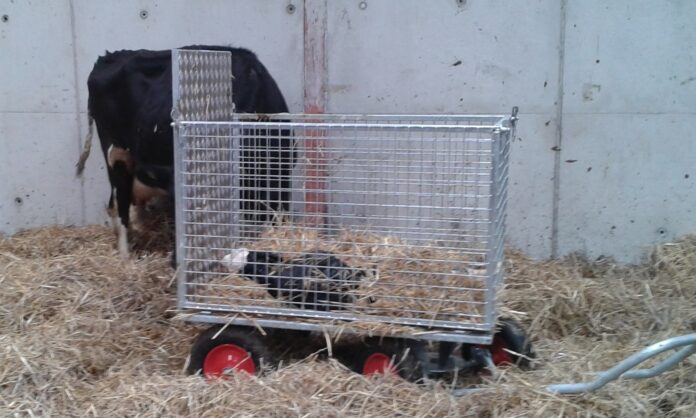In this article, Conail Keown, CAFRE senior dairy development adviser, looks at key factors to improve labour efficiency this winter on your dairy farm.
Outsourcing work:
One of the key features of efficient dairy farms is the farmer’s ability to organise and delegate tasks.
Breeding is a key area on dairy farms, especially if breeding is condensed into a limited number of weeks. Outsourcing this work has brought many benefits, from reducing farm labour demand for heat detection and breeding to improving fertility performance for the overall herd.
Good communication:
The ability to communicate between all people working on the farm is critical when it comes to achieving an efficient dairy farm.
When it comes to making the most efficient use of the labour on a dairy farm, good organisational practice and communication techniques like whiteboards, WhatsApp or farm maps are required to ensure that the overall enterprise runs as efficiently as possible.
Building good practise and standard operating procedures (SOP) is critical for an efficient dairy farm.
Building team morale:
Whilst pay is an important element of attracting and retaining good, reliable staff, some farmers surveyed noted that it was not always the most important aspect of the job.
Developing a sense that employees were trusted in the job and had opinions valued is important, as well as having good communication and flexible and fair working hours.
Building a two-way communication environment between employees and managers will ultimately improve productivity on your farm.
Capital investment to improve labour efficiency:
The milking process alone can account for 25-50% of the hours worked on a farm – depending on facilities.
This can change dramatically when herds expand or move to three times milking per day. Changing the milking facilities on your farm may be a ‘once in a generation’ decision.
Selecting the most cost-effective, labour-effective and simply operated system is critical.
The investment must meet labour-saving criteria – will the parlour allocate concentrate automatically? Is cow flow at parlour entry and exit optimised?
Capitalise on technology development:
From survey data, heat detection equipment appears to provide significant labour savings.
This equipment reduces labour demand for heat detection while also offering early detection of animal health issues.
Fully utilised, well-designed and managed correctly, these investments can provide significant labour savings for your business.
Main points
Dairy farming has changed over the past ten years. There are now fewer dairy farms, resulting in the remaining farms getting bigger and, therefore, more dependent on hired labour.
While improving labour efficiency with tweaks to the production model or investment into labour-saving technology coupled with outsourcing and utilising contractors will fill the labour demand gap to a certain extent.
There may well still be a labour shortage on your farm; working long hours as an owner-operator is not the solution and, in the long run, is counterproductive.
Take time now to assess your business in terms of labour demand.
- How many hours per week are you working?
- Have you taken a break from the farm in the past six months?
- How efficient is your farm in terms of hours worked per cow per year?
- Any future expansion must be carefully planned, with labour demand taking a central position in those plans.
Other news articles on That’s Farming:





